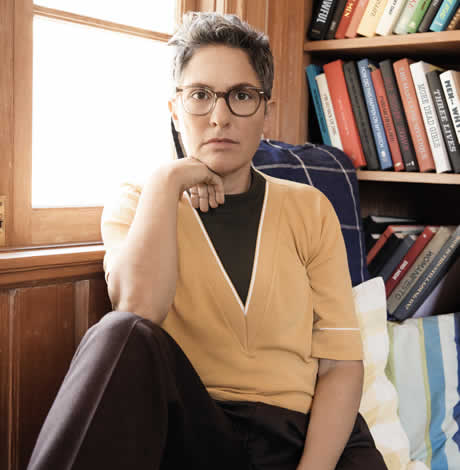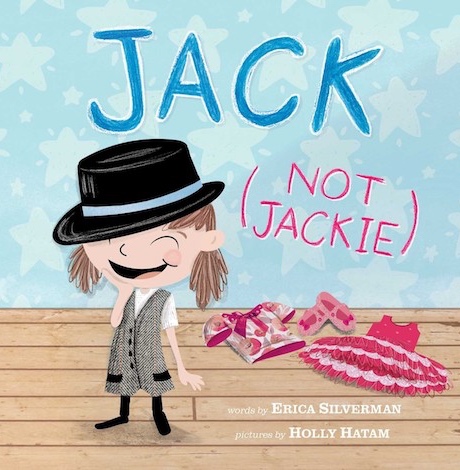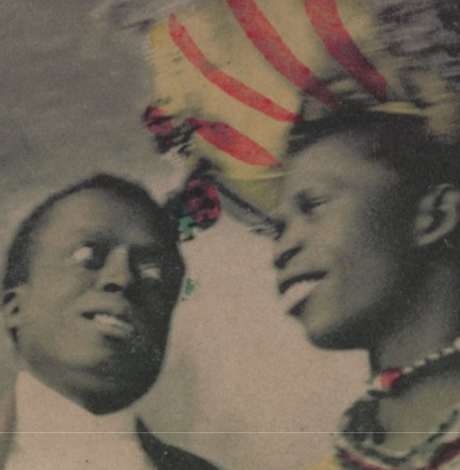Books
FALL ARTS 2018 BOOKS: rans themes front and center in many fall ’18 books
‘Black Queer Hoe,’ ‘Rise of Genderqueer’ among anticipated titles
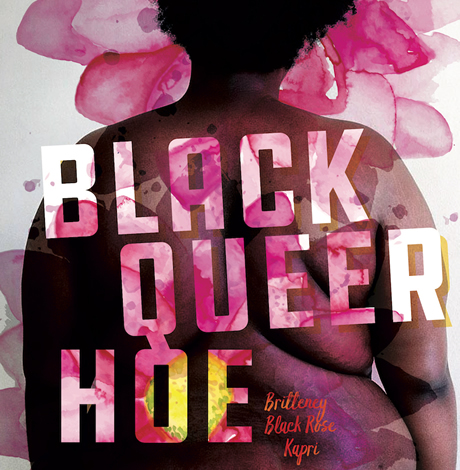
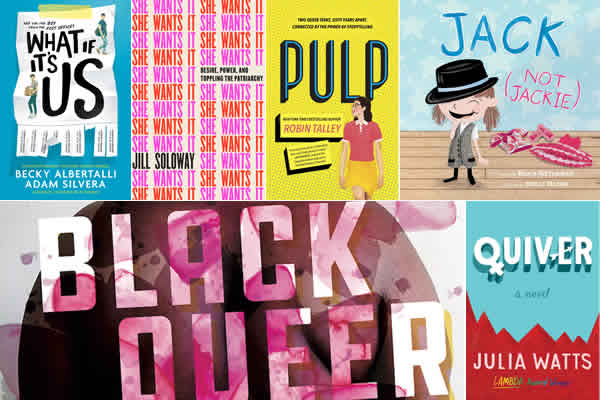
‘Black Queer Hoe,’ ‘Rise of Genderqueer’ among anticipated titles for 2018.
EVENTS
The 23rd annual Baltimore Book Festival takes place at Baltimore’s Inner Harbor Sept. 28-30 from 11 a.m.-7 p.m. The festival will feature hundreds of local and national authors speaking on 11 stages throughout the festival, including several LGBT contributors.
On Saturday (Sept. 29) at 3 p.m. at the Radical Bookfair Pavilion, Charlene A. Carruthers, a black queer feminist activist and author, presents her new book “Unapologetic: A Black, Queer and Feminist Mandate for Radical Movements,” exploring how (and why) to make the black liberation movement more radical, queer and feminist. Later that day at 5 p.m. at Science Fiction and Fantasy, a panel of LGBT authors will discuss the integration of queer folks in science fiction writing and the role queer voices play in the genre. The festival is free and open to the public. For more information, including a full schedule of events and a map, visit baltimorebookfestival.com.
This year’s Fall for the Book festival takes place Oct. 10-13 at George Mason University (10:30 a.m.-7:30 p.m.; 4400 University Dr., Fairfax, Va.). Now in its 20th year, the festival seeks to connect readers with authors and encourage cultural growth through reading.
In addition to nationally renowned politician and civil rights leader John Lewis, there are many noteworthy activists and authors lined up, including several representatives from the LGBT world. Sandy Allen, a non-binary trans writer, speaker and teacher, will participate in a panel on “Writing Through Identity” with three other essayists whose work all focus on exploration of identity (Oct. 12, 6-7:15 p.m.). Eithne Luibhéid, professor of gender and women’s studies at the University of Arizona, will also give a talk on “Sexualities, Intimacies and Queer Migration,” dissecting the intersection between immigration and queerness (Oct. 10, 4:30 p.m.). The event is free and open to the public. For more details and a full schedule of events, visit fallforthebook2018.org.
RELEASES
In her powerful debut, “Black Queer Hoe” (Haymarket Books, Sept. 4), Chicago performance poet and playwright Britteney Black Rose Kapri wrestles with questions about sexual freedom and sexual exploitation in a world where black queer women are frequently denied basic rights to bodily autonomy. Kapri is refreshingly unapologetic and provides crucial insights and perspective into many conversations currently playing out across the country surrounding race, gender, sexuality and power.
In his new poetry collection, “The Rise of Genderqueer” (Brain Mill Press, Sept. 4), Wren Hanks challenges assumptions about gender, dismantling the status quo from every angle. A trans writer from Texas, his poems are raw and authentic and create a space for his extraordinary voice.
Akemi Dawn Bowman’s new novel “Summer Bird Blue” (Simon Pulse, Sept. 11) tells the story of Rumi Seto, a mixed race teen suffering from the tragedy of losing her sister while simultaneously attempting to understand her own identity as asexual. A raw story about loss, grief and identity, “Summer Bird Blue” is a powerful read that sheds light on the strength and perseverance of humanity.
If you love graphic novels, Tillie Walden’s “On a Sunbeam” (First Second, Oct. 2) is a must read. Set in the deepest reaches of space, “On a Sunbeam” is an epic graphic novel that takes the reader on one girl’s journey of falling in love at boarding school then losing everything. A story of love and second chances, Walden beautifully writes and illustrates what one critic has called “her best work yet” in this fall’s release.
If you have a young person in your life, “Jack (Not Jackie)” (little bee books, Oct. 9) is a wonderful gift idea. In this moving picture book, Erica Silverman tells the story of a big sister who realizes her little sister Jackie may not in fact be her sister at all. Jackie doesn’t like to wear dresses or have long hair and wants to be called Jack instead.
Author of acclaimed fiction “Simon vs. the Homo Sapiens Agenda” Becky Albertalli alongside Adam Silvera release their new young-adult romance “What If It’s Us” this October (HarperTeen, Oct. 9). Ben has just broken up with his boyfriend when Arthur moves to New York City for the summer to work on Broadway. Although Ben is heartbroken and not interested in starting a new relationship, when he meets Arthur at the post office, he’s forced to reconsider. “What If It’s Us” is a story of fate and trying to figure out what exactly the universe has in store for us.
Lambda Award Winner Julia Watts releases her latest young-adult novel, “QUIVER” (Three Rooms Press, Oct. 16), this fall. Set in rural Tennessee, it tells of a friendship between two teenagers on opposite sides of today’s culture wars. Libby comes from a strict evangelical family while her new neighbor Zo is a gender fluid feminist, socialist (and of course vegetarian), and yet despite their differences, they are drawn to each other and connect instantly.
Creator of Amazon’s “Transparent” Jill Soloway is finally releasing her powerful memoir “She Wants It: Desire, Power and Toppling the Patriarchy” (Crown Archetype, Oct. 16), which reveals her personal journey from a straight, married mother of two to a queer and nonbinary activist. Her memoir deconstructs the harmful dominant narratives still shaping our society, challenging the status quo and encouraging the reader to think critically about issues from consent and #metoo to gender and inclusion.
If you love poetry, Mary Lambert’s new collection “Shame Is an Ocean I Swim Across” (Feiwel & Friends, Oct. 23) should definitely be added to your fall reading list. A writer and LGBT activist, Lambert is also a songwriter and collaborated with Macklemore and Ryan Lewis to create the Grammy-nominated queer anthem “Same Love.” The poems in her new collection tackle issues of sexual assault, mental illness and body acceptance.
In “The Autobiography of a Transgender Scientist” (Mit Press, Oct. 23) Ben Barres, esteemed neurobiologist at Stanford University, tells the story of his life from his gender transition to his scientific work and finally his advocacy for gender equity in the sciences. This book, completed shortly before his death in 2017, explores his experience as a female student at MIT in the 1970s and his transition from female to male in his 40s alongside fascinating accounts of his scientific accomplishments.
If you enjoyed “Simon vs. the Homo Sapiens Agenda,” Kheryn Callender’s new book “This is kind of an epic love story” (HarperCollins, Oct. 30) may be up your alley. After losing his father and watching too many relationships in his life fall apart, Nathan Bird no longer believes in happy endings. However all that changes when he realizes his true feelings for his best friend from childhood, Oliver. Can Nathan set aside his anxieties and pursue his own happy ending?
Set in Washington, Robin Talley’s “Pulp” (Harlequin Teen, Nov. 13) tells of two queer women across generations, one from the 1950s and another from present day. The first narrative follows 18-year-old Janet as she struggles to keep her queer identity a secret and finds solace in literature during the age of McCarthyism. The second follows Abby Zimet who can’t stop thinking about her senior project on 1950s lesbian pulp fiction and her ever-growing connection with the authors and works she’s reading. Talley’s dual narrative novel weaves the stories of two girls across six decades, connected by words, bravery and their desire to push society forward.
Trans activist Brynn Tannehill walks readers through transgender issues and dismantles harmful misconceptions in her new book “Everything you every wanted to know about trans* (but were too afraid to ask)” (Jessica Kingsley Publishers, Nov. 21). Her book will open your eyes and leave you prepared to engage in critical conversations around transgender folks and most importantly, be a better ally to the trans community.
In “Not just a tomboy: a trans masculine memoir” (Jessica Kingsley, Nov. 21), Caspar J. Baldwin recounts his own gender exploration from the 1990s to present day, arguing that even though progress has been made in the last two decades, there is still a lot of work to be done regarding trans activism and acceptance. This book serves as both a support for trans men currently struggling to accept their identities and live with their bodies and an informative glimpse for non-trans folks into one trans man’s experience.
Books
New book offers observations on race, beauty, love
‘How to Live Free in a Dangerous World’ is a journey of discovery

‘How to Live Free in a Dangerous World: A Decolonial Memoir’
By Shayla Lawson
c.2024, Tiny Reparations Books
$29/320 pages
Do you really need three pairs of shoes?
The answer is probably yes: you can’t dance in hikers, you can’t shop in stilettos, you can’t hike in clogs. So what else do you overpack on this long-awaited trip? Extra shorts, extra tees, you can’t have enough things to wear. And in the new book “How to Live Free in a Dangerous World” by Shayla Lawson, you’ll need to bring your curiosity.

Minneapolis has always been one of their favorite cities, perhaps because Shayla Lawson was at one of Prince’s first concerts. They weren’t born yet; they were there in their mother’s womb and it was the first of many concerts.
In all their travels, Lawson has noticed that “being a Black American” has its benefits. People in other countries seem to hold Black Americans in higher esteem than do people in America. Still, there’s racism – for instance, their husband’s family celebrates Christmas in blackface.
Yes, Lawson was married to a Dutch man they met in Harlem. “Not Haarlem,” Lawson is quick to point out, and after the wedding, they became a housewife, learned the language of their husband, and fell in love with his grandmother. Alas, he cheated on them and the marriage didn’t last. He gave them a dog, which loved them more than the man ever did.
They’ve been to Spain, and saw a tagline in which a dark-skinned Earth Mother was created. Said Lawson, “I find it ironic, to be ordained a deity when it’s been a … journey to be treated like a person.”
They’ve fallen in love with “middle-American drag: it’s the glitteriest because our mothers are the prettiest.” They changed their pronouns after a struggle “to define my identity,” pointing out that in many languages, pronouns are “genderless.” They looked upon Frida Kahlo in Mexico, and thought about their own disability. And they wish you a good trip, wherever you’re going.
“No matter where you are,” says Lawson, “may you always be certain who you are. And when you are, get everything you deserve.”
Crack open the front cover of “How to Live Free in a Dangerous World” and you might wonder what the heck you just got yourself into. The first chapter is artsy, painted with watercolors, and difficult to peg. Stick around, though. It gets better.
Past that opening, author Shayna Lawson takes readers on a not-so-little trip, both world-wide and with observant eyes – although it seems, at times, that the former is secondary to that which Lawson sees. Readers won’t mind that so much; the observations on race, beauty, love, the attitudes of others toward America, and finding one’s best life are really what takes the wheel in this memoir anyhow. Reading this book, therefore, is not so much a vacation as it is a journey of discovery and joy.
Just be willing to keep reading, that’s all you need to know to get the most out of this book. Stick around and “How to Live Free in a Dangerous World” is what to pack.
The Blade may receive commissions from qualifying purchases made via this post.
Books
Story of paralysis and survival features queer characters
‘Unswerving: A Novel’ opens your eyes and makes you think

‘Unswerving: A Novel’
By Barbara Ridley
c.2024, University of Wisconsin Press
$19.95 / 227 pages
It happened in a heartbeat.
A split-second, a half a breath, that’s all it took. It was so quick, so sharp-edged that you can almost draw a line between before and after, between then and now. Will anything ever be the same again? Perhaps, but maybe not. As in the new book “Unswerving” by Barbara Ridley, things change, and so might you.

She could remember lines, hypnotizing yellow ones spaced on a road, and her partner, Les, asleep in the seat beside her. It was all so hazy. Everything Tave Greenwich could recall before she woke up in a hospital bed felt like a dream.
It was as though she’d lost a month of her life.
“Life,” if you even wanted to call it that, which she didn’t. Tave’s hands resembled claws bent at the wrist. Before the accident, she was a talented softball catcher but now she could barely get her arms to raise above her shoulders. She could hear her stomach gurgle, but she couldn’t feel it. Paralyzed from the chest down, Tave had to have help with even the most basic care.
She was told that she could learn some skills again, if she worked hard. She was told that she’d leave rehab some day soon. What nobody told her was how Les, Leslie, her partner, girlfriend, love, was doing after the accident.
Physical therapist Beth Farringdon was reminded time and again not to get over-involved with her patients, but she saw something in Tave that she couldn’t ignore. Beth was on the board of directors of a group that sponsored sporting events for disabled athletes; she knew people who could serve as role models for Tave, and she knew that all this could ease Tave’s adjustment into her new life. It was probably not entirely in her job description, but Beth couldn’t stop thinking of ways to help Tave who, at 23, was practically a baby.
She could, for instance, take Tave on outings or help find Les – even though it made Beth’s own girlfriend, Katy, jealous.
So, here’s a little something to know before you start reading “Unswerving”: author Barbara Ridley is a former nurse-practitioner who used to care for patients with spinal cord injuries. That should give readers a comfortable sense of satisfaction, knowing that her experiences give this novel an authenticity that feels right and rings true, no faking.
But that’s not the only appeal of this book: while there are a few minor things that might have readers shaking their heads (HIPAA, anyone?), Ridley’s characters are mostly lifelike and mostly likable. Even the nasties are well done and the mysterious character that’s there-not-there boosts the appeal. Put everyone together, twist a little bit to the left, give them some plotlines that can’t ruined by early guessing, and you’ve got a quick-read novel that you can enjoy and feel good about sharing.
And share you will because this is a book that may also open a few eyes and make readers think. Start “Unswerving” and you’ll (heart) it.
The Blade may receive commissions from qualifying purchases made via this post.
Books
Examining importance of queer places in history of arts and culture
‘Nothing Ever Just Disappears’ shines with grace and lyrical prose

‘Nothing Ever Just Disappears: Seven Hidden Queer Histories’
By Diarmuid Hester
c.2024, Pegasus Books
$29.95/358 pages
Go to your spot.
Where that is comes to mind immediately: a palatial home with soaring windows, or a humble cabin in a glen, a ramshackle treehouse, a window seat, a coffeehouse table, or just a bed with a special blanket. It’s the place where your mind unspools and creativity surges, where you relax, process, and think. It’s the spot where, as in the new book “Nothing Ever Just Disappears” by Diarmuid Hester, you belong.

Clinging “to a spit of land on the south-east coast of England” is Prospect Cottage, where artist and filmmaker Derek Jarman lived until he died of AIDS in 1994. It’s a simple four-room place, but it was important to him. Not long ago, Hester visited Prospect Cottage to “examine the importance of queer places in the history of arts and culture.”
So many “queer spaces” are disappearing. Still, we can talk about those that aren’t.
In his classic book, “Maurice,” writer E.M. Forster imagined the lives of two men who loved one another but could never be together, and their romantic meeting near a second-floor window. The novel, when finished, “proved too radical even for Forster himself.” He didn’t “allow” its publication until after he was dead.
“Patriarchal power,” says Hester, largely controlled who was able to occupy certain spots in London at the turn of the last century. Still, “queer suffragettes” there managed to leave their mark: women like Vera Holme, chauffeur to suffragette leader Emmeline Pankhurst; writer Virginia Woolf; newspaperwoman Edith Craig, and others who “made enormous contributions to the cause.”
Josephine Baker grew up in poverty, learning to dance to keep warm, but she had Paris, the city that “made her into a star.” Artist and “transgender icon” Claude Cahun loved Jersey, the place where she worked to “show just how much gender is masquerade.” Writer James Baldwin felt most at home in a small town in France. B-filmmaker Jack Smith embraced New York – and vice versa. And on a personal journey, Hester mourns his friend, artist Kevin Killian, who lived and died in his beloved San Francisco.
Juxtaposing place and person, “Nothing Ever Just Disappears” features an interesting way of presenting the idea that both are intertwined deeper than it may seem at first glance. The point is made with grace and lyrical prose, in a storyteller’s manner that offers back story and history as author Diarmuid Hester bemoans the loss of “queer spaces.” This is really a lovely, meaningful book – though readers may argue the points made as they pass through the places included here. Landscapes change with history all the time; don’t modern “queer spaces” count?
That’s a fair question to ask, one that could bring these “hidden” histories full-circle: We often preserve important monuments from history. In memorializing the actions of the queer artists who’ve worked for the future, the places that inspired them are worth enshrining, too.
Reading this book may be the most relaxing, soothing thing you’ll do this month. Try “Nothing Ever Just Disappears” because it really hits the spot.
The Blade may receive commissions from qualifying purchases made via this post.
-

 District of Columbia5 days ago
District of Columbia5 days agoNew D.C. LGBTQ+ bar Crush set to open April 19
-

 District of Columbia5 days ago
District of Columbia5 days agoReenactment of first gay rights picket at White House draws interest of tourists
-

 Arizona5 days ago
Arizona5 days agoAriz. governor vetoes anti-transgender, Ten Commandments bill
-

 South America3 days ago
South America3 days agoDaniel Zamudio murderer’s parole request denied

